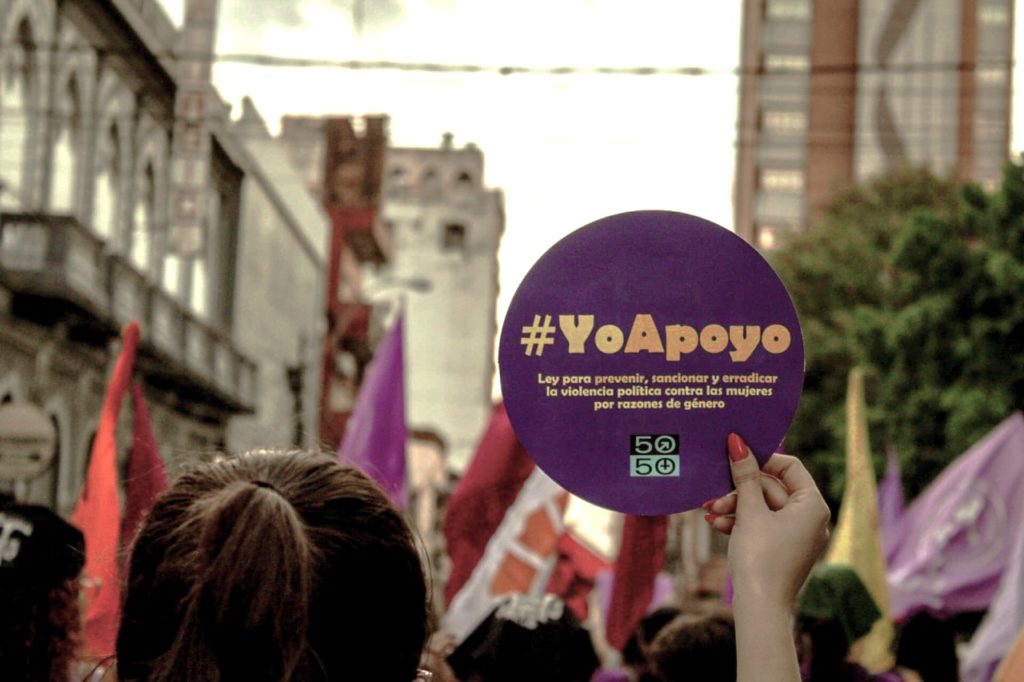
By Ma. del Pilar Abente Lahaye
After years and years of struggle of liberal women for their political rights and in particular for gender parity in the PLRA, finally in the last Convention of March 13, 2022, the highest party authority approved the inclusion of parity in its bylaws and the long-awaited objective was achieved. Basically, parity in the lists implies that they be composed of half women and half men (50% and 50%). In this article I describe and reflect on the long process that led to this modification of the PLRA statutes.
First of all, it is worth mentioning some of the background that was part of the process towards democratic parity. In 1996, the Electoral Code established a quota of 20% of candidacies for women in internal party elections. Subsequently, in 2006, the PLRA raised the minimum number of women on the lists to 33% and incorporated the position mandate, which consists of the obligation to place at least one woman of every three candidates. Although these were positive advances, with time the quota began to function as a maximum and not as a minimum. In other words, the quota did not exceed 20% of women in elected office.
Consequently, liberal women began to work for the incorporation of parity in their statutes. Thus, already back in 2014 a party convention was held, in which parity was proposed, although that attempt did not prosper. In any case, the 2014 attempt constituted a key precedent for the concept of parity to be discussed at the grassroots of the entire party and to be appropriated by the largest number of women.
Another effort that also served as a precedent for the idea of parity to permeate deeply in the party was the treatment of the Parity Law before the National Congress in 2018. This process was largely promoted by the Grupo Impulsor de Paridad Democrática (GIPD), formed by women from different political parties in the country. The proposal was presented in the Senate Chamber and approved.
The liberal women demonstrated that despite their enormous differences, they could work with maturity to design and implement a gender agenda, jointly and with little time. To this end, they did a meticulous job in seeking to persuade each of the convention members, sharing arguments, seeking dialogue and convincing each of them
During the treatment in the Chamber of Deputies it was possible to talk to many of the deputies of all parties and, especially, it was possible to position parity as an issue in the public opinion. In spite of all these positive steps, the final result was not the desired one, because a Parity Law without parity was approved, since the substantial articles of the original project were eliminated. This was later vetoed by the Executive Power.
Parallel to all this, women from various political parties began to take part in workshops, training schools for women politicians and communication campaigns. A clear evolution of this process is that these women began to make their presence felt in feminist demonstrations such as #8M, demanding parity.

In December 2021, the directors of the new party government (elected in June 2021) joined together and requested the president of the party to convene a board meeting to discuss the inclusion of parity in the agenda of the next extraordinary convention, which would also address the authorization for the agreement and alliances for the general elections of 2023.
On February 9, 2022, the president of the party called a meeting to discuss the matter. The proposal for modification was previously agreed upon by the directors and then socialized in the session to the other fellow directors. On this occasion, the members of the board unanimously resolved to include the proposal to modify the party’s bylaws to incorporate parity in the agenda. This fact generated high expectations and enthusiasm in the party and in other social and political organizations and led more women to join this new initiative from different parts of the country, including former party officials, current activists and women of the liberal youth, among others, without distinction of internal movements.
The Extraordinary Convention was set for March 13 of the same year, that is, one month after the inclusion of parity in the agenda. Therefore, there was very little time left to do the work of convincing and achieving the necessary votes to pass the measure at the convention. The risk that the measure would not pass was plausible. The sour memory of the parity approval at the 2014 convention generated unrest, as well as the fact that about 80% of the party’s convention members were male.
The hurdles, however, did not discourage them. In addition to all the previous work carried out by the women of the PLRA (and of other parties and organizations), who prepared the necessary conditions for the treatment and approval of this specific proposal, the liberal women also demonstrated that they could overcome the internal divisions of the party. Without distinction of movements, women organized themselves in terms of strategy, communication, organization and role distribution in order to achieve the approval of parity.
Finally, the objective was achieved. The favorable vote of almost the total number of Convention members present (596 regular Convention members) illustrates the dimension of the victory.
The liberal women demonstrated that despite their enormous differences, they could work with maturity to design and implement a gender agenda, jointly and with little time. To this end, they did a meticulous job in seeking to persuade each of the convention members, sharing arguments, seeking dialogue and convincing each of them. Of course, the position and public positioning in favor of parity on the part of the leaders of the main movements was another determining factor for the result.
Undoubtedly, the achievement of the liberal women marks a milestone in the history of the PLRA. This achievement will also serve as an impulse for women of the other parties, which still do not have parity, to come closer to this victory. Or, better yet, it will be a motivation for all women politicians to take a step forward in the conquest of their political rights and achieve the sanction of a law to establish parity at the national level.
In the next article, we will expand on the legal and institutional implications of the inclusion of parity in the PLRA bylaws.
Images: Liberal Feminist Platform
